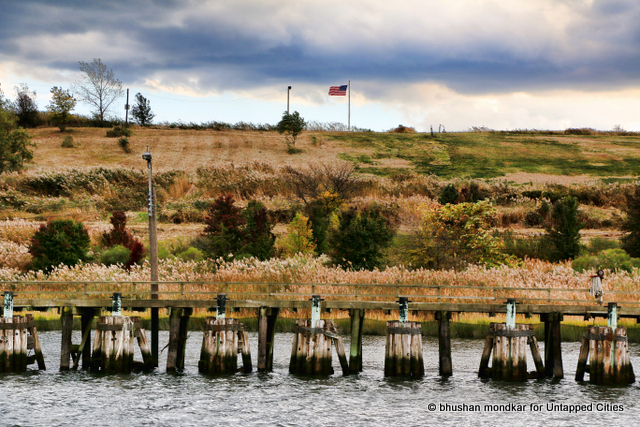
Remember that colossal landfill on Staten Island that held millions of tons of New York’s garbage? That once stinking, seagull infested dump, aka the Freshkills landfill which gave Staten Island an unfortunate identity for over half a century, is now on its way to becoming the largest park developed in New York City in over 100 years. Spanning over 2,200 acres, Freshkills Park will be three times the size of Central Park upon completion! Untapped Cities had the opportunity of joining AIANY aboard the Classic Harbor Line yacht ‘Manhattan’ for one of their Archtober tours, meandering through the narrow creeks (or Kills as they call it in Dutch) within this already picturesque landscape.
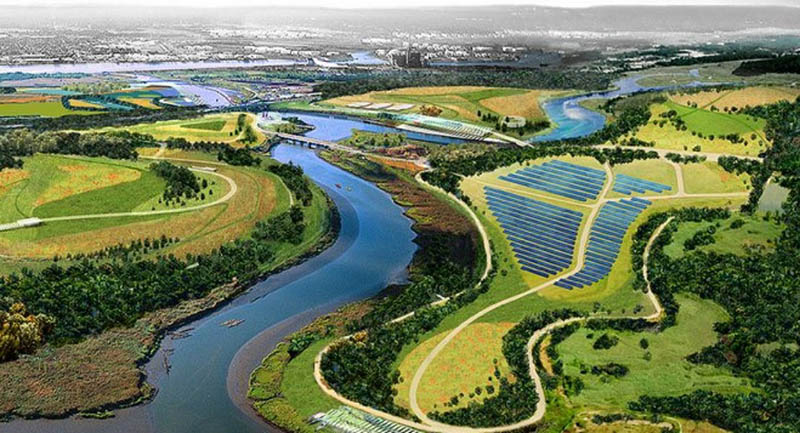 Rendering of Freshkills Park, courtesy: James Corner Field Operations and NYC Parks Department
Rendering of Freshkills Park, courtesy: James Corner Field Operations and NYC Parks Department
The (almost) four hour tour, hosted by Arthur Platt of AIANY and Carrie Grassi of the Office for Recovery and Resiliency, transported us from the dense urban forest of lower Manhattan into the soft riparian edge of Staten Island and back. Beginning at Chelsea Piers, our yacht swooped past the old and new towers of lower Manhattan, the Statue of Liberty and Governors island, before making its way into the heart of Freshkills Park via Arthur Kill and Kill Van Kull.
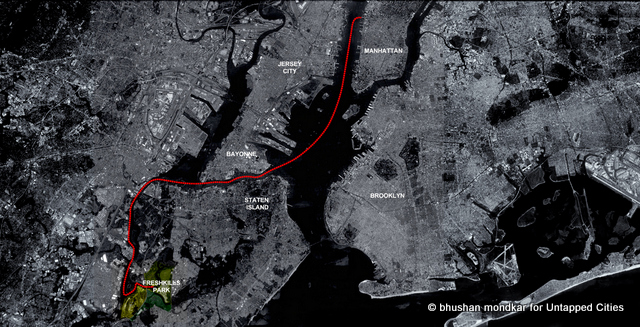 The route of our boat ride aboard the stylish yacht Manhattan.
The route of our boat ride aboard the stylish yacht Manhattan.
Throughout the expedition, our hosts guided us along a fascinating path of history, heartache and success of the former landfill, as we followed the same route taken by barges that once carried 29,000 tons of refuse daily. The creation of Freshkills landfill is a true testament to the common belief prevailing through the mid- 20th century that wetland areas fostered pestilence, disease, and criminal behavior; and a common remedy for improving this (otherwise ecologically rich and beneficial) land was to fill and bury it in refuse!
So it’s no surprise, that in 1948, Robert Moses chose this vast landscape to temporarily absorb NYC’s garbage. Moses’ vision to “reclaim” the land, involved covering it with garbage for three years to establish a solid raised grade in order to eventually construct coastal parks and residential areas. Alas, three years turned into fifty-three years and Freshkills soon became the largest landfill in the world. With undulating hills of trash rising 200 feet high, devoid of coastal parks and residential areas, Freshkills was instead surrounded by angry and resentful Staten Islanders whose backyard had literally become the city’s dumping ground.
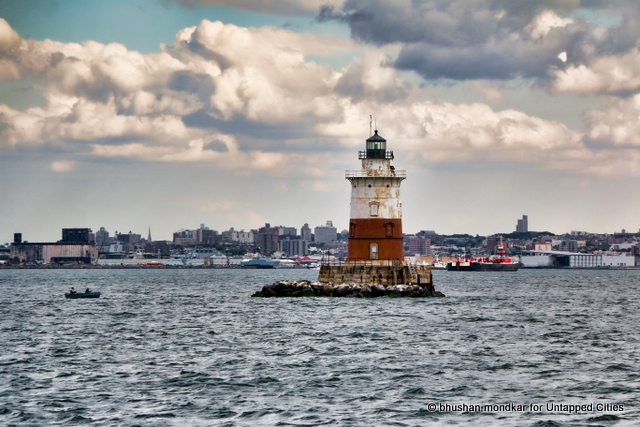 Robins Reef Lighthouse originally built in 1839. The present tower was built in 1883.
Robins Reef Lighthouse originally built in 1839. The present tower was built in 1883.
Cruising through the Upper Bay, our eyes wandered around an array of neighborhoods along Brooklyn’s waterfront, port of Bayonne and the northern shores of Staten Island which will soon be boasting of the world’s tallest observation wheel. In the distance, the Verrezano Narrows Bridge formed an elegant gateway for all vessels into New York Harbor.
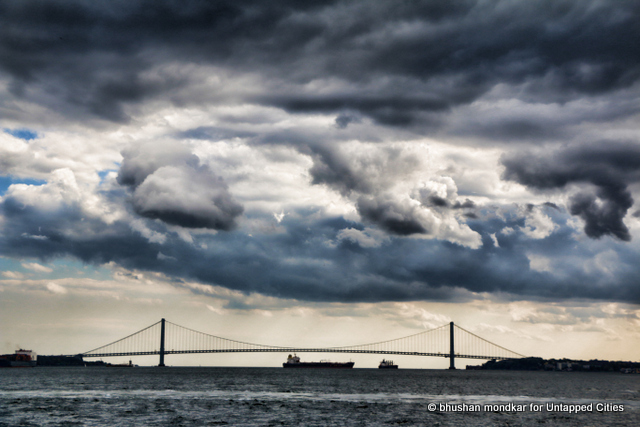
The coastal edges along the 3-mile stretch of Kill Van Kull are dominated by the active industrial infrastructure in Bayonne and their decaying precursors, across the channel, along Staten Island’s Richmond Terrace. Although these once thriving industries are long gone, the historic Caddell dry docks still provides service to marine vessels, including South Street Seaport‘s three historic ships; Peking, Wavertree and the lightship Ambrose.
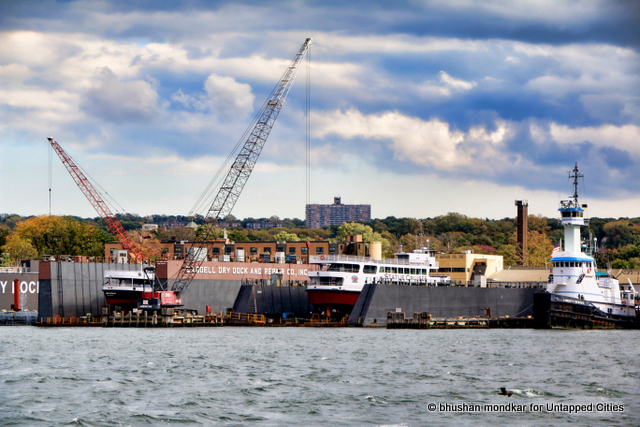 Caddel Dry Docks established in 1903 in Staten Island, still operates six floating dry docks along Kill Van Kull.
Caddel Dry Docks established in 1903 in Staten Island, still operates six floating dry docks along Kill Van Kull.
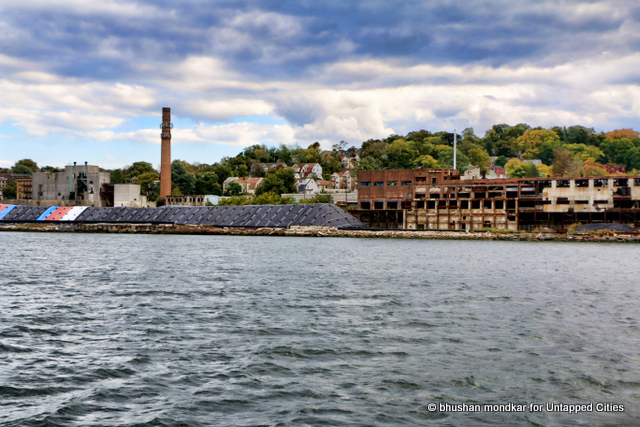
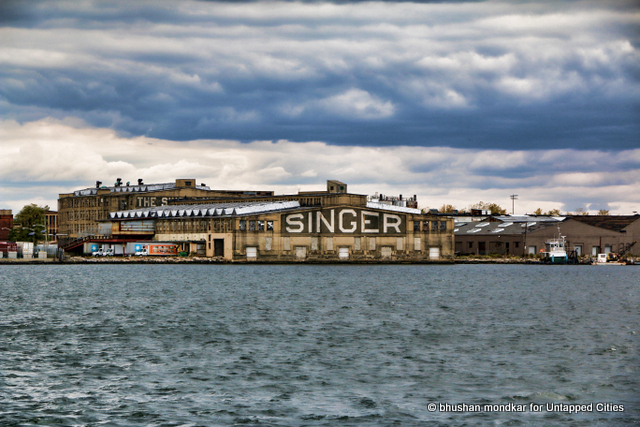 The Singer Sewing Machine Factory built in 1872 was Elizabeth (NJ’s) largest industry before closing in 1982.
The Singer Sewing Machine Factory built in 1872 was Elizabeth (NJ’s) largest industry before closing in 1982.
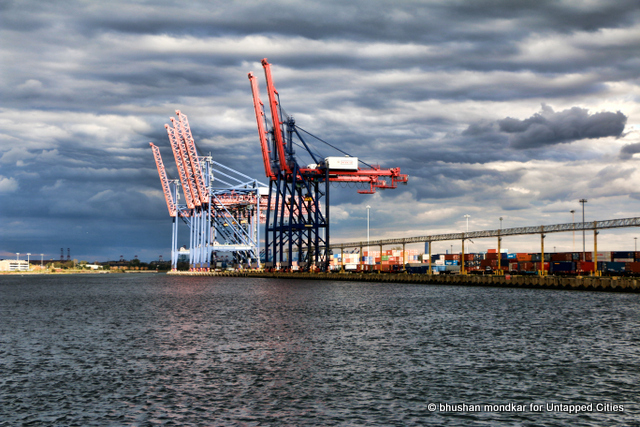 Port Ivory located on the North-West shore of Staten Island.
Port Ivory located on the North-West shore of Staten Island.
Bringing us back to the history of Freshkills, Grassi explained that following its closure as a landfill in 2001 (with 30 more years of landfill capacity remaining), the city embarked upon an international design competition to imagine ways in which this valuable land could be used. The winning proposal from James Corner Field Operations outlined a strategy spanning three decades, to transform the former landfill into New York’s newest park. Through the rare pairing of natural and engineered landscapes, including creeks, wetlands and expansive meadows, Freshkills Park will not only offer an array of recreational opportunities, but also provide educational programming, diverse habitats for wildlife and ecological restoration.
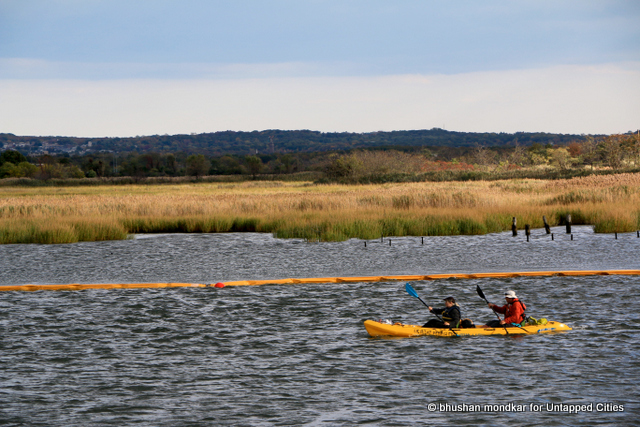
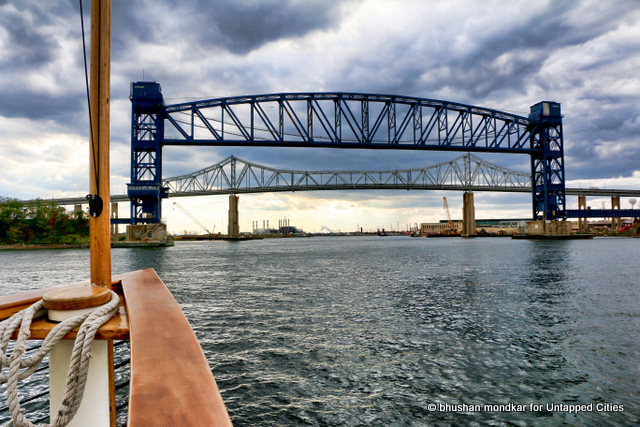
As the enchanted crowd was absorbing the flurry of information, we passed by a barge carrying what could have been mistaken for garbage of all things! Turns out, it was filled with bundles of paper and boxes that New Yorker’s diligently recycle every day–on its way to be transformed into pizza boxes at the Pratt recycling plant located right at the tip of Freshkills Park.
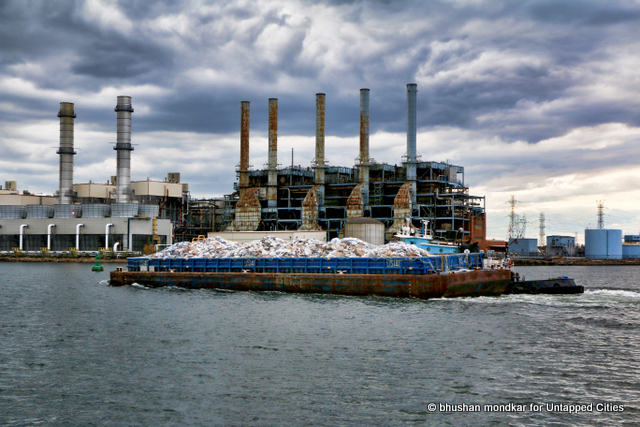
Since 2006, NYC Parks and the Sanitation department have assumed responsibility for implementing the project using James Corner’s master plan as a conceptual guide. The site is being developed from the outside in so that the communities living at its edges, will be able to enjoy the benefits of the new park sooner. An important aspect which sets James Corner’s design apart from others, is his incorporation of various sustainable features, including geothermal heating and cooling, wind farms and the city’s largest solar panel installation. All of which will be nestled among the four enormous mounds, now almost entirely capped with a 5 ft thick engineered system comprised of different sub-layers.
Each of the four mounds made of 135 to 200 feet of trash will serve different functions. The South mound will accommodate recreational activities including horseback riding and mountain bike trails and the North mound will primarily be pastoral land. Educational components will be located on the East mound, while the West mound, which temporarily reopened to accept debris after the tragic events of 9/11, will have a monument in honor of the recovery effort.
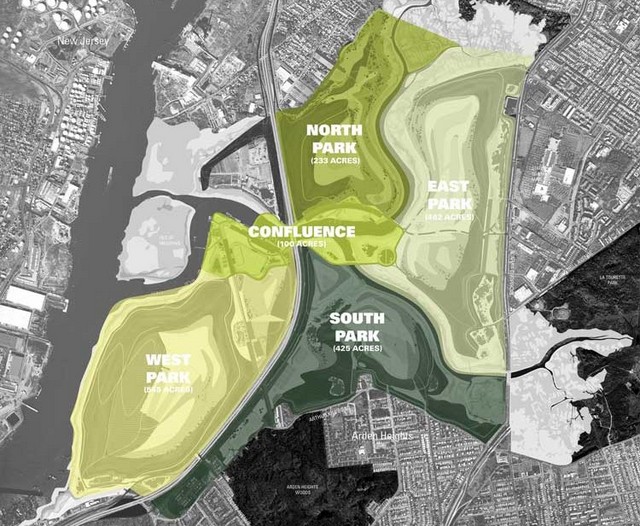 The draft master plan shows Frshkills park comprised of five sub-parks. Courtesy: NYC Parks and Recreation and James Corner Field Operations.
The draft master plan shows Frshkills park comprised of five sub-parks. Courtesy: NYC Parks and Recreation and James Corner Field Operations.
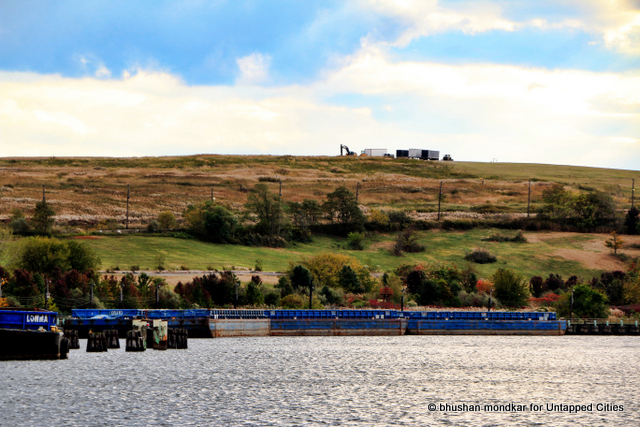
While slinking through the confluence, Grassi explained how Freshkills Park has already evolved to serve the adjacent communities through an advanced landfill gas collection system. The Department of Sanitation has been harvesting methane from the decomposing waste buried under the mounds–enough to heat approximately 22,000 homes. Thanks to this sustainable initiative, the city generates approximately $12 million in annual revenue by selling this gas to National Grid.
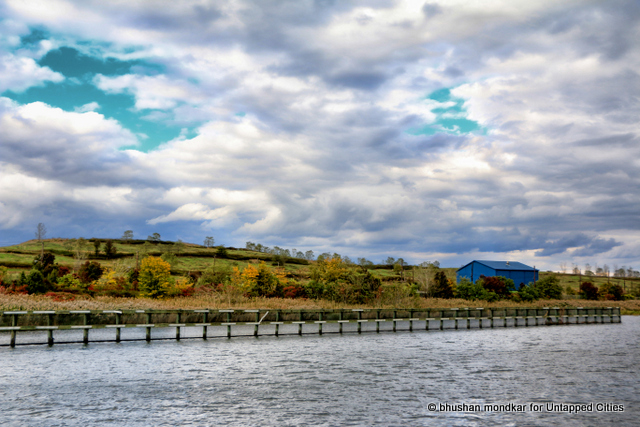
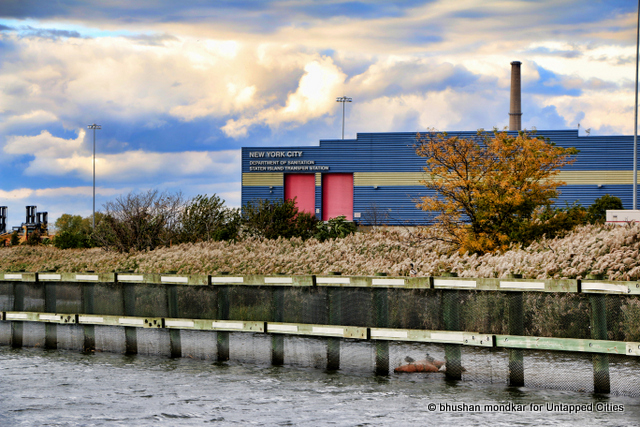
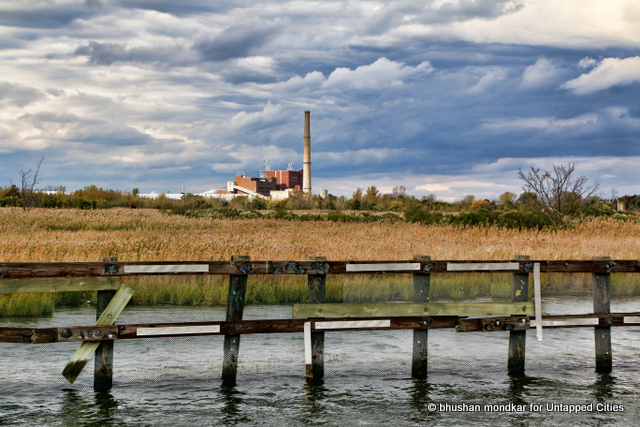
While the park is an incredibly captivating destination, the journey is equally intriguing, sprinkled with a plethora of moments that depict different eras in the history of the island. From the rustic industrial infrastructure to scenic wildlife habitat on the isle of meadows, the AIA boat tour took us on a 4 hour experience through Staten Island’s natural and built history. Freshkills Park is the story of renewal and New York’s effort to restore balance and beauty back to nature.
The garbage however, still continues to flow, with its final destination now spread across four different states.
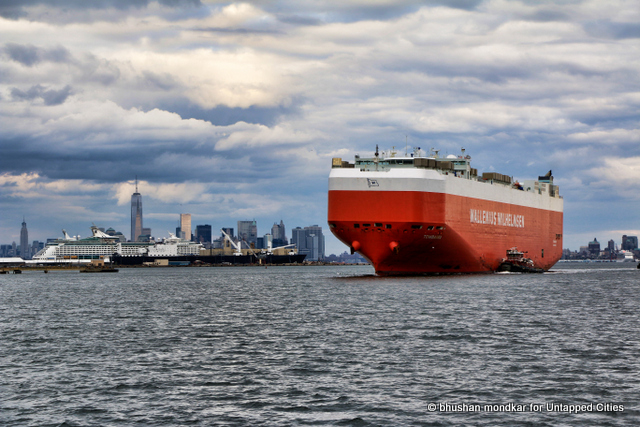
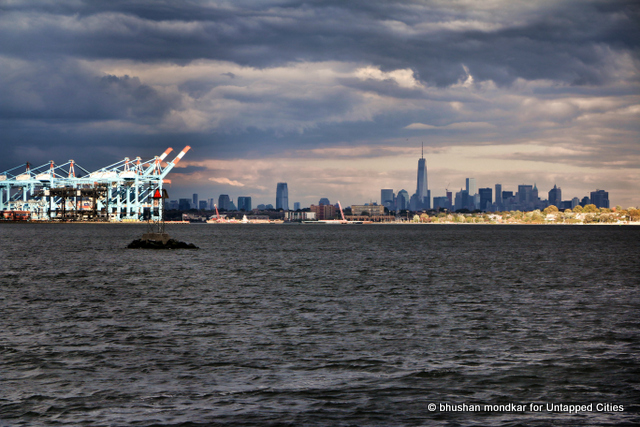
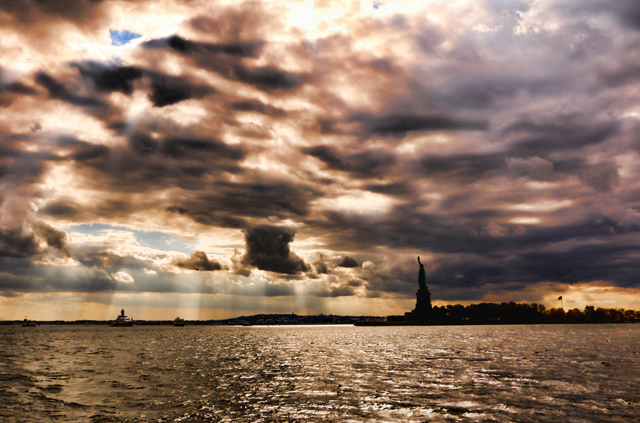
Catherine is a Project Manager with the Trees & Sidewalks Program at NYC Parks. This article was written in part by bhushan mondkar. Get in touch with them at @bhushan_NYC and @catherine2m





